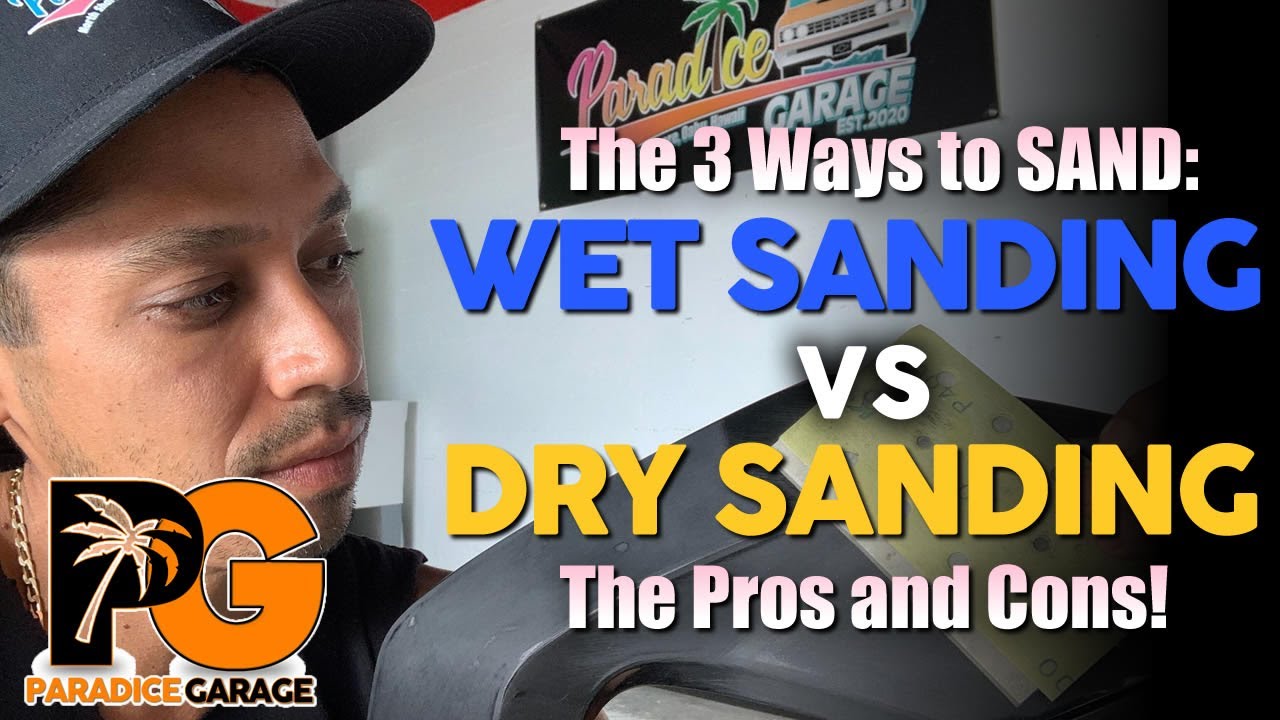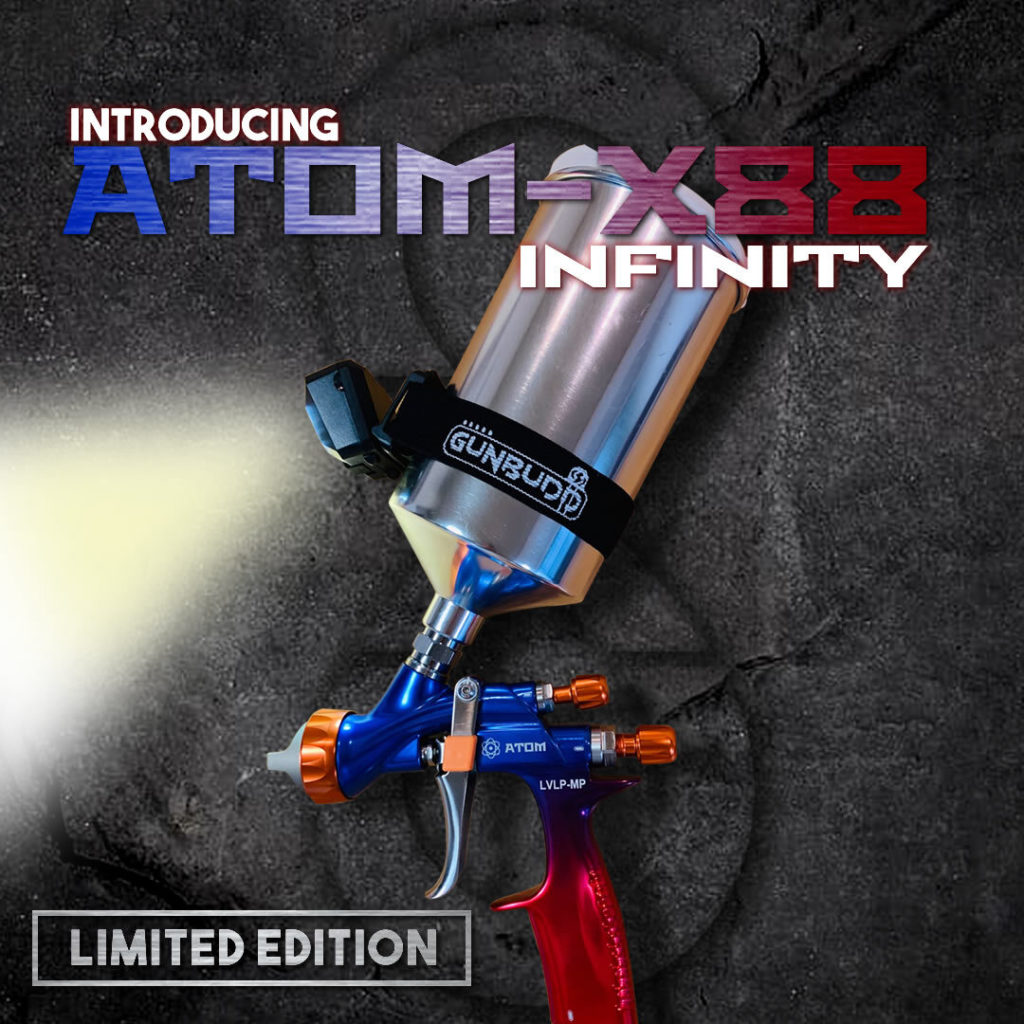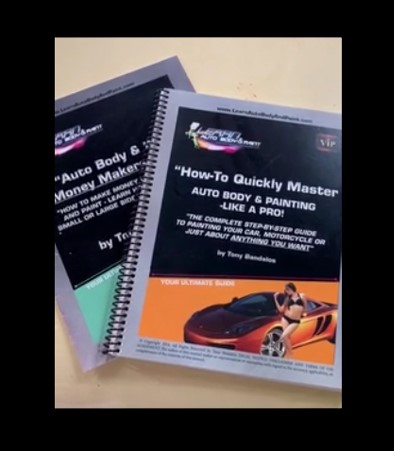Hey! What’s up, guys? Tony here from learnautobodyandpaint.com and Paradice Garage. We’re going to talk about the Three (3) ways to Sand and the Pros and Cons of Wet Sanding vs. Dry Sanding because we are going to do a Custom Painting of the 2014 Honda Grom soon.
There are three (3) ways of Sanding – The Hand Sanding, Sanding Using Machine(DAs) and Block Sanding.
For prep painting: What I like to do is finish sanding with 400 grit. For a clear coat, you can just sand it and paint it right over it. You don’t have to prime it.
Let’s start with the Hand Sanding
We’ll be using a piece of sandpaper – 400 grit and the other one is super Assilex sandpaper by Kovax. It’s a Velcro pad but it’s very soft. You can use this type of sandpaper and all kind of little grooves on your Hand Sanding and really comes out really nice.
So here’s the wrong way to sand if you’re using your hands. The wrong way is staying in one spot for a long time because you’re actually putting your finger indentions in the paint. If you go too long like that, it’s not good because you’re not having a flat surface.
So if you’re going to be any type of flat sanding, you always want to use the palm hand. That’s the correct way of if you’re going to have to use your fingers, you’re going to have to go in a motion- a circular motion to get it nice and flat.
The Pros and Cons of Dry Sanding and Wet Sanding
If you’re Dry Sanding, some of the Cons are it gets very dusty and get dust all over the place.
But the Pros of Dry Sanding are that you can see right away what you’re cutting. You can see it’s coming out and flat. When it’s already flat and fully like a matte, now it’s ready for paint. You could shoot a single stage over that or a basecoat clearcoat right top on that.
For Wet Sanding – Some people say you could put a little dish soap in here so it doesn’t cake up the pad but it really doesn’t make a huge difference. It’s up to you if you want to do that. If you want to put dish soap in your sanding in your water, put a couple of drops in but you’re not going to overkill it.
In Wet Sanding, you can’t really tell too much that it’s cutting but you can tell when it doesn’t beat up and dry up. So the Pros of Wet Sanding, basically, you get a cleaner cut and your sandpaper lasts longer and you got less dust.
With this kind of small part sanding, I normally like to just wet sand by hand. Then for bigger parts, I like to use the DAs for Dry and Wet Sanding.
Dry sanding using DA
It sands super quick. If there’s like a nick, if you cut through then, I would recommend priming over raw plastic. You don’t have to go crazy, you don’t have to use an epoxy primer. You could just use a 2k filler primer just hit that area. You can also get the Aerosol cans like spray max. Pop it, it’s a 2k filler primer just hit those spots because you’re going to have more areas when you’re working on a whole bike. You’re going to have to prime and touch up. So that’s using the DA.
With the DA what you could do is put an inner surface pad, a lot soft. They also have harder ones, which is pretty firm. The soft one can put on as an inner surface pad, then put your pad on. That allows you to get in harder areas, because the foam, kind of cuts in. It easily gets in harder areas. If you see white after sand it down, that means it’s a clear coat. So you know this is a basecoat clearcoat paint on here.
Wet Sanding Using DA
So If you wanted to do DA with Wet Sanding, you absolutely can. You just wet it down, sand it and get chamois. In the end, it pretty much comes out the same from dry sanding.
But I do believe, wet sanding gives you a cleaner cut, and then once you shammy it, you wash it, you can see exactly how it’s looking.
DAs have specific wet sanders that you can get called Water Bug and probably some other brands out there now. But I just use my regular DA for Wet Sanding if I have to because you’re not drenching the whole thing in water. You basically just got lit, just the pads pretty much wet while you’re sanding so it doesn’t really do any damages. I haven’t had any damage using my DAs as a Wet Sander when needed.
The last phase is using Blocks
In a panel like this, I wouldn’t be using blocks, because there are so many curves to it and indentions and all of that. It’s more of a hand sanding panel.
However, if you’re using a block, I wouldn’t be using a big hard block. I would be using more of a thin block, all from a durable small thin block and they also have sponge block. Just get your paper and sticks it right on the top. I got my pads from Kovax. You just stick your paper on and this is a very good hand block with the foam, it allows you to easily get the corners.
Just be careful. You don’t really want to cut through the clearcoat and get into the basecoat. If you see chips, you can feather it out super easy and quick.
You can also Wet Sand with this same thing. You just wet it. Always sand with the panel. You can tell if it is sanded if it’ll look like just kind of caked up. And if you can see kind of like shiny next to it, it’s not sanded. So you want to make sure that you get this and what would I do ls just use your hand. You could use a disc with your fingers and again, do the sanding to get it all done.
For 3m pads, there is a red/maroon and green. The green one is similar to a 600 grit and the red one is similar to like a 400 or a little less than that grit. The green ones are finer and I don’t use this too much because the scratches are inconsistent. There are chunks of the abrasive texture.
Some scratches are deeper than the others. It’s not like using good sandpaper. So this is good for scuffing something up quickly and then, what I like to do is go over it with the sandpaper. You do have chances because of the deep scratches, that your metallics kind of fall into it and you’re going to see like scratches through like a metallic paint job or whatever.
So in the next video, you’re actually going to see me doing a lot of demo work. Basically just sanding but in this video, I wanted to talk to you while showing it at the same time. Stay Tuned at Paradice Garage YT Channel – LIKE and SUBSCRIBE!
It’s Tony here! I hope you learned something about this. This is just a quick video. Kind of teaching you the Pros and Cons and showing you some demos of wet sanding versus dry sanding.
We are going to do a lot of work on this little mini bike project (Honda Grom). I’m going to be doing a full sanding on this bike and getting ready for paint. Then we’re going to get into the candy custom paint job on this.
If you want to get more auto body training like I said we’ve been teaching 10 people for over 10years on the internet. Learn this skill so they can open up their own auto body shop, custom paints their own cars. You gain the personal fulfillment and pride of taking a beater and turning it into a dream car that you’ve always dreamed of – check out LearnAutoBodyandPaint.com
-Tony


